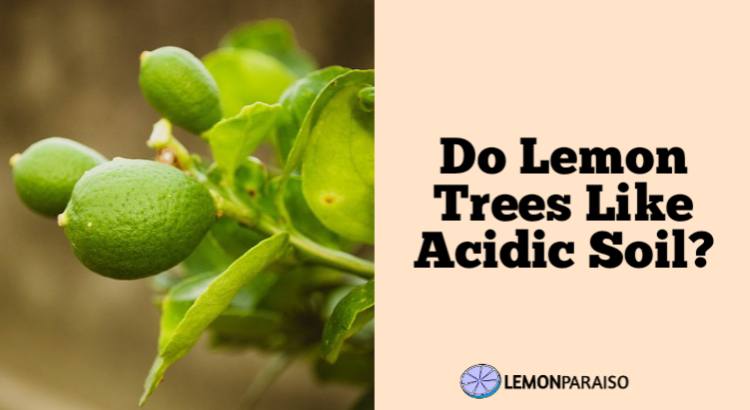Growing Meyer Lemon Tree Indoors
Meyer lemon trees are a popular citrus plant that can be grown indoors, providing fresh, juicy lemons year-round. If you’re interested in growing a Meyer lemon tree indoors, there are a few important things to consider, such as the right type of soil, lighting requirements, and watering needs.
How To Grow Meyer Lemon Indoors?
Growing Meyer lemon trees indoors can be an enjoyable and fruitful experience if done properly. To start, choose a healthy and disease-free tree from a reputable nursery, and opt for a dwarf variety as it is best suited for indoor conditions.
Plant the tree in a well-draining potting mix, which can be a combination of peat moss, perlite, and organic matter. It’s crucial to select a pot with drainage holes to prevent waterlogging, and ideally, one that’s at least 12 inches in diameter.
Place your tree in a location with bright, indirect sunlight for at least 6-8 hours a day. During the winter months, a grow light can supplement the reduced natural light.
What Are The Best Conditions For Growing Meyer Lemon Indoors?
The best conditions for growing Meyer lemon indoors involve providing consistent temperature, humidity, and ventilation. Keep your tree in a room where the temperature ranges between 65-80°F during the day and 55-65°F at night.
Meyer lemons prefer moderate humidity, so consider using a humidifier or placing a tray of water near the plant to maintain humidity levels. Additionally, ensure proper air circulation by placing the tree near a fan or an open window for a few hours each day to prevent the buildup of pests and diseases.
Can Meyer Lemon Be Grown In Pots Indoors?
Meyer lemon trees can indeed be grown in pots indoors, as long as certain conditions are met. Select a large pot with drainage holes and a saucer to catch excess water. As the tree grows, you may need to transplant it to a larger pot to accommodate its growth.
When repotting, gently remove the tree from the old container, trim any damaged or circling roots, and plant it in the new pot with fresh soil. Be sure to provide adequate support to the tree, such as a stake, to prevent it from toppling over.
How Much Light Does A Meyer Lemon Tree Need Indoors?
Indoor Meyer lemon trees require plenty of light to thrive and produce fruit. Ideally, they should receive at least 8-12 hours of bright, indirect sunlight daily. South-facing windows are typically the best spots for providing consistent light exposure.
If natural sunlight is insufficient, especially during the winter months, consider using a grow light to supplement your tree’s light needs. Keep in mind that light intensity decreases significantly as the distance from the light source increases, so place the grow light close to the tree without touching the foliage.
What Kind Of Soil Is Best For Growing Meyer Lemon Indoors?
The ideal soil for growing Meyer lemon trees indoors is a well-draining, slightly acidic mix with a pH of 6.0-6.5. You can create your own mix by combining equal parts peat moss, perlite, and organic compost.
It’s crucial to avoid soil mixes that retain too much moisture, as this can lead to root rot and other issues. To maintain soil health, periodically test the pH and adjust as necessary with lime or sulfur, depending on whether the soil is too acidic or too alkaline.
How Often Should I Water My Meyer Lemon Tree Indoors?
When it comes to watering, Meyer lemon trees prefer consistent moisture without being waterlogged. Water your tree thoroughly until the water drains out of the pot, and then allow the top 1-2 inches of soil to dry out before watering again.
This typically equates to watering once every 7-10 days, but it may vary depending on factors like temperature, humidity, and pot size. Be sure to adjust your watering schedule as needed, as overwatering can lead to root rot, while underwatering can cause leaf drop and poor fruit production.
How Long Does It Take For A Meyer Lemon Tree To Bear Fruit Indoors?
Growing Meyer lemon trees indoors can take anywhere from 2-3 years to begin producing fruit, depending on the tree’s age and growing conditions. Patience is key, as the tree needs to establish a strong root system and reach a certain level of maturity before it can bear fruit.
Providing adequate light, consistent temperature, and proper care will increase the chances of your tree fruiting earlier.
How Do I Fertilize My Meyer Lemon Tree When Growing It Indoors?
Fertilizing your indoor Meyer lemon tree is essential for promoting healthy growth and fruit production. Use a balanced, water-soluble fertilizer specifically formulated for citrus trees, which typically contains higher levels of nitrogen, phosphorus, and potassium.
Fertilize your tree every 4-6 weeks during the growing season (spring and summer) and reduce the frequency to every 8-10 weeks during the dormant season (fall and winter). Be sure to follow the fertilizer package instructions for the proper application rate, and always water your tree thoroughly after fertilizing to avoid root burn.
What Are The Common Problems When Growing Meyer Lemon Indoors?
Some common problems when growing Meyer lemon trees indoors include pests, diseases, and environmental issues. Pests like spider mites, scale insects, and aphids can infest your tree, causing damage to the foliage and hindering growth.
Regularly inspect your tree and treat any pest issues promptly with insecticidal soap or neem oil. Diseases such as root rot and leaf spot can occur due to poor air circulation or overwatering. Ensure proper ventilation and avoid overwatering to minimize the risk of diseases.
Environmental factors like insufficient light, inconsistent temperature, and humidity can also lead to poor growth and fruit production. Address these issues by providing proper growing conditions to ensure a healthy tree.
How Do I Prune My Meyer Lemon Tree When Growing It Indoors?
Pruning your Meyer lemon tree is crucial for maintaining its shape, promoting airflow, and encouraging fruit production. Prune your tree during its dormant season, typically in late winter or early spring.
Start by removing any dead, diseased, or damaged branches using sharp, sanitized pruning shears. Next, trim any branches that cross over or rub against each other to prevent damage and improve air circulation.
To maintain the desired shape and size, prune back overly long or vigorous branches, and remove any suckers or water sprouts that may be sapping energy from the main tree. Lastly, be sure to clean and sanitize your pruning tools after each use to prevent the spread of diseases.


